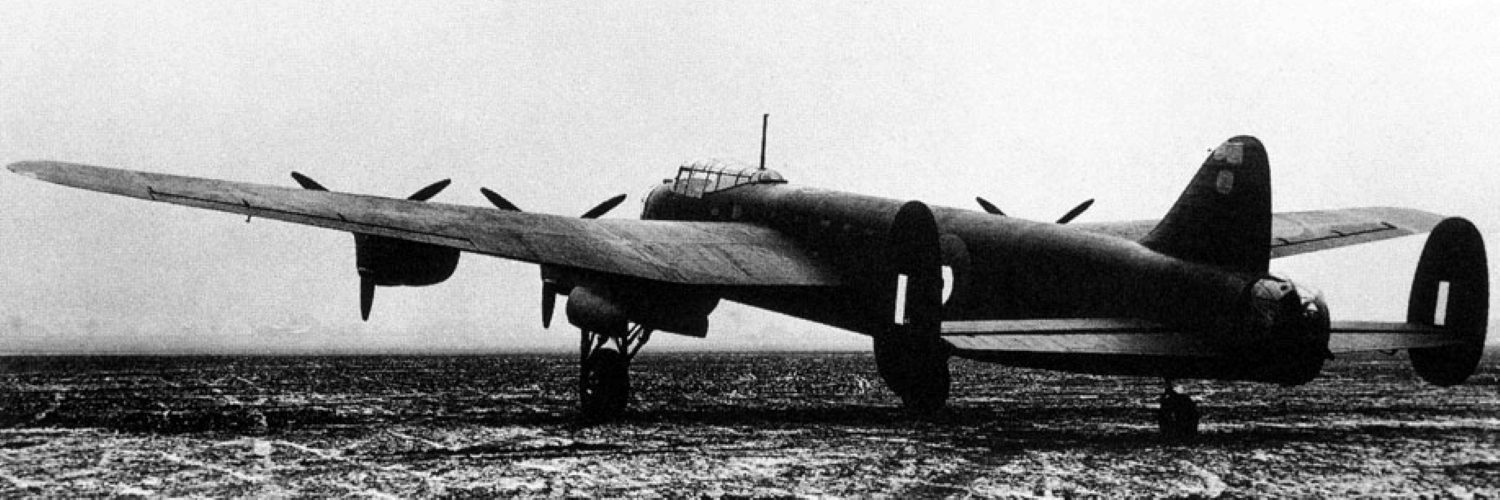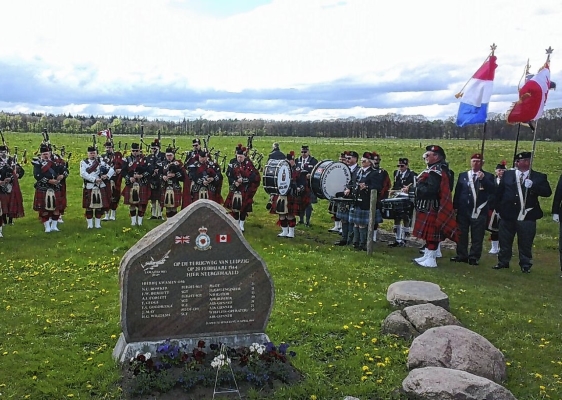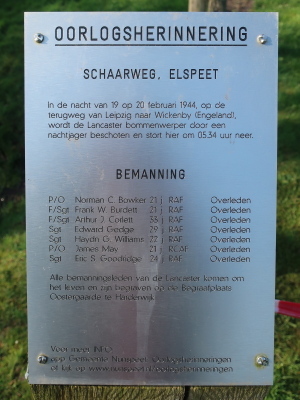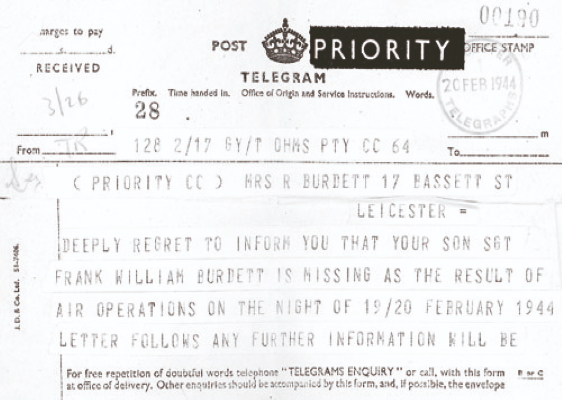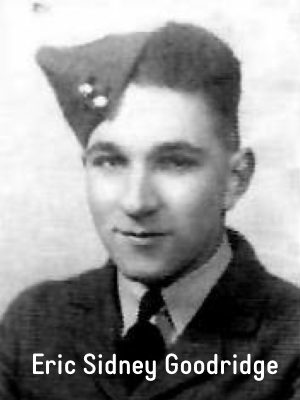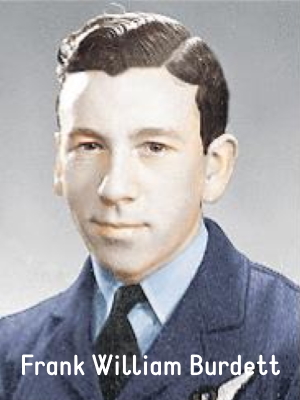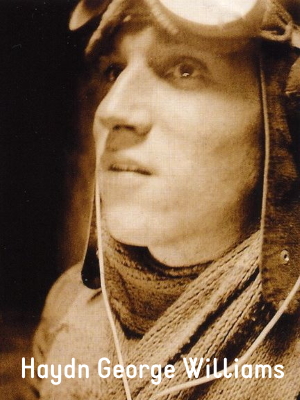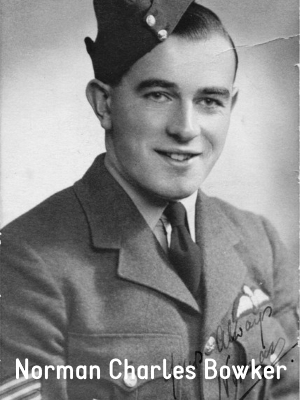A Sunday morning at the Schaarweg
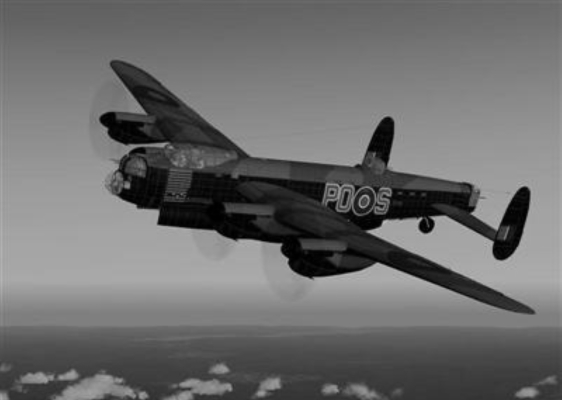 It had been quiet for a few days. Due to bad weather, Allied aircraft had hardly flown between 16 and 19 February 1944. On the night of Saturday 19 to Sunday 20 February, the sky was full of aircraft again. The roar of engines was in the air. One of those aircraft was the Lancaster JB-609 PH-F, which had taken off at 23:23 on Saturday evening from Wickenby air base, home of 12 Squadron. A crew of seven with Flight Sergeant Norman Charles Bowker as pilot. A total of 823 aircraft flew to Leipzig. 12 Squadron provided eleven Lancasters. The trip was not a success. That night, 78 aircraft did not return and 420 crew members lost their lives. It was the heaviest loss in a single night for Bomber Command up to that day. It was Oberfeldwebel Heinz Vinke who shot down the Lancaster with his Messerschmidt 110G at 05:34 at an altitude of 4800 metres, fifteen kilometres northwest of Apeldoorn. The aircraft landed in a meadow on the right side of the Schaarweg in Elspeet, approximately two hundred metres from the corner with the Kleine Kolonieweg.
It had been quiet for a few days. Due to bad weather, Allied aircraft had hardly flown between 16 and 19 February 1944. On the night of Saturday 19 to Sunday 20 February, the sky was full of aircraft again. The roar of engines was in the air. One of those aircraft was the Lancaster JB-609 PH-F, which had taken off at 23:23 on Saturday evening from Wickenby air base, home of 12 Squadron. A crew of seven with Flight Sergeant Norman Charles Bowker as pilot. A total of 823 aircraft flew to Leipzig. 12 Squadron provided eleven Lancasters. The trip was not a success. That night, 78 aircraft did not return and 420 crew members lost their lives. It was the heaviest loss in a single night for Bomber Command up to that day. It was Oberfeldwebel Heinz Vinke who shot down the Lancaster with his Messerschmidt 110G at 05:34 at an altitude of 4800 metres, fifteen kilometres northwest of Apeldoorn. The aircraft landed in a meadow on the right side of the Schaarweg in Elspeet, approximately two hundred metres from the corner with the Kleine Kolonieweg.
13-year-old Wim Pol went to have a look with his father: “I can still remember very well that I saw two members of the crew still sitting in the aircraft seats. Completely burned (almost black) with red-rimmed eyes. A horrific image that has always stayed with me.”
17-year-old Kees van de Steeg went to have a look between two church services: “The wreckage still contained the remains of two charred bodies. Like mummies, a sight you won’t soon forget.” Four other bodies were lying around the aircraft. They were taken to Harderwijk. The seventh occupant was not found until March 19 in a densely wooded area near a farm on Oude Garderenseweg.
Seven crew members
- The pilot of the aircraft was F/Sgt Norman Charles Bowker, aged 21
- Navigator was F/Sgt Arthur Ian Corlett, from the Isle of Man and at 33 the oldest member of the crew
- Flight engineer was Sgt Frank William Burdett, aged 21
- Radio operator and gunner was Sgt Haydn George Williams, aged 22, married and father of Brian and Kay. He was known as Don and was a talented boxer
- Bomb aimer was Sgt Edward Gedge, aged 29, married
- Tail gunner was Sgt Eric Sidney Goodridge, aged 24. He was not buried until a month later on 21 March 1944 in Harderwijk. He was found on 19 March. According to a statement he was found near Staverden and had suffered two broken legs and had been trying to survive by eating grass. This would have been determined by the bald spot where he was found
- The turret gunner was P/O James May, 21 years old, from the Royal Canadian Air Force
All crew members were buried in Harderwijk. The Lancaster bomber had only been in service for three months. The aircraft was delivered on 7 November 1943 and came to an end on 20 February 1944. It was taken to a demolition company in Utrecht in March 1944. The cost was 1200 guilders. On 19 April 2008, a monument was unveiled on the Schaarweg, with a boulder for each crew member who died. Brian Williams, the son of Sgt. Haydn George Williams, was present with his wife. Source: among others Elspeet Historie

